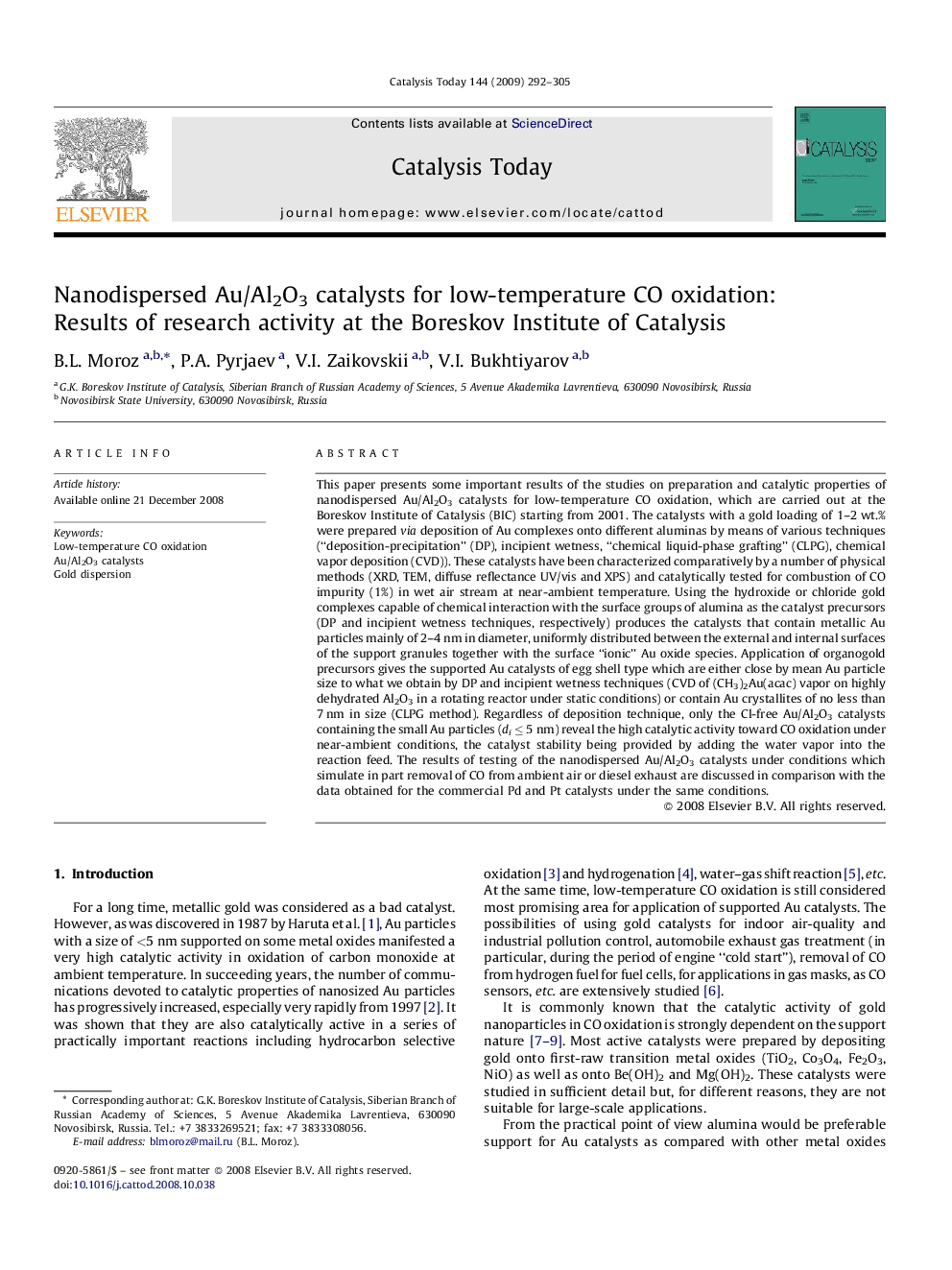| Article ID | Journal | Published Year | Pages | File Type |
|---|---|---|---|---|
| 57307 | Catalysis Today | 2009 | 14 Pages |
This paper presents some important results of the studies on preparation and catalytic properties of nanodispersed Au/Al2O3 catalysts for low-temperature CO oxidation, which are carried out at the Boreskov Institute of Catalysis (BIC) starting from 2001. The catalysts with a gold loading of 1–2 wt.% were prepared via deposition of Au complexes onto different aluminas by means of various techniques (“deposition-precipitation” (DP), incipient wetness, “chemical liquid-phase grafting” (CLPG), chemical vapor deposition (CVD)). These catalysts have been characterized comparatively by a number of physical methods (XRD, TEM, diffuse reflectance UV/vis and XPS) and catalytically tested for combustion of CO impurity (1%) in wet air stream at near-ambient temperature. Using the hydroxide or chloride gold complexes capable of chemical interaction with the surface groups of alumina as the catalyst precursors (DP and incipient wetness techniques, respectively) produces the catalysts that contain metallic Au particles mainly of 2–4 nm in diameter, uniformly distributed between the external and internal surfaces of the support granules together with the surface “ionic” Au oxide species. Application of organogold precursors gives the supported Au catalysts of egg shell type which are either close by mean Au particle size to what we obtain by DP and incipient wetness techniques (CVD of (CH3)2Au(acac) vapor on highly dehydrated Al2O3 in a rotating reactor under static conditions) or contain Au crystallites of no less than 7 nm in size (CLPG method). Regardless of deposition technique, only the Cl-free Au/Al2O3 catalysts containing the small Au particles (di ≤ 5 nm) reveal the high catalytic activity toward CO oxidation under near-ambient conditions, the catalyst stability being provided by adding the water vapor into the reaction feed. The results of testing of the nanodispersed Au/Al2O3 catalysts under conditions which simulate in part removal of CO from ambient air or diesel exhaust are discussed in comparison with the data obtained for the commercial Pd and Pt catalysts under the same conditions.
